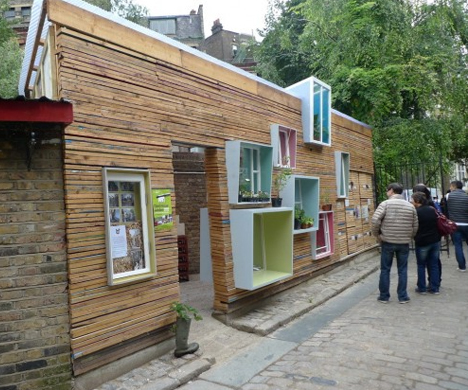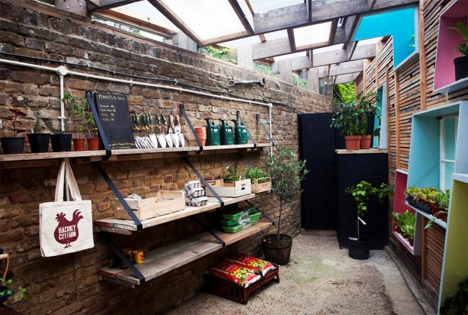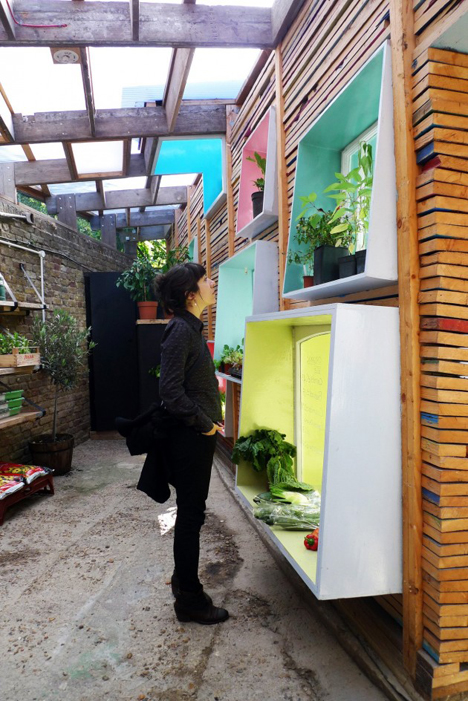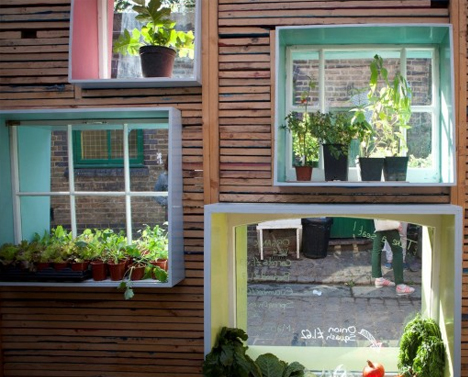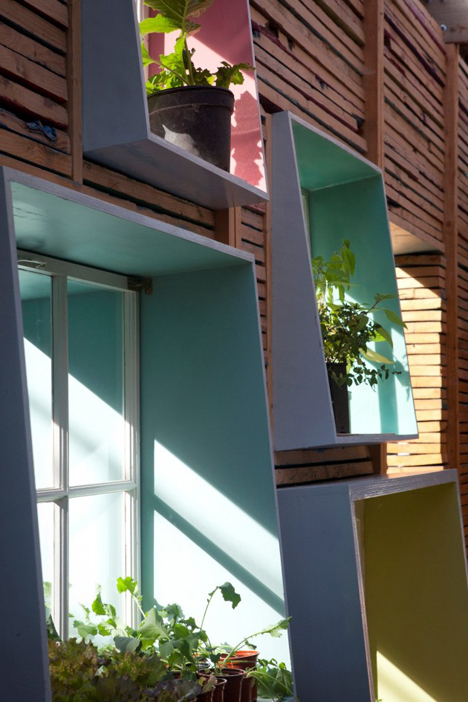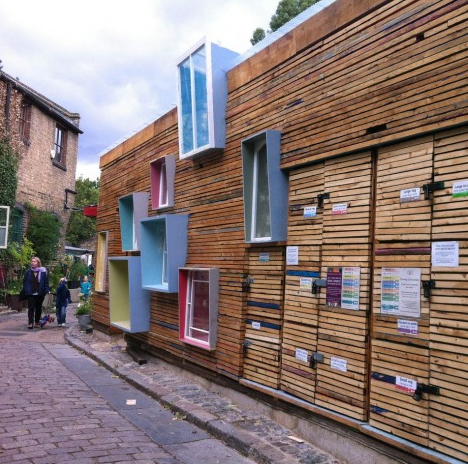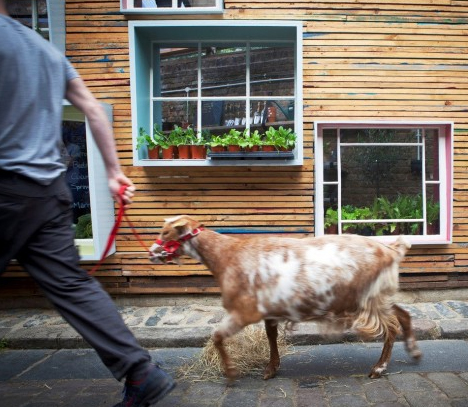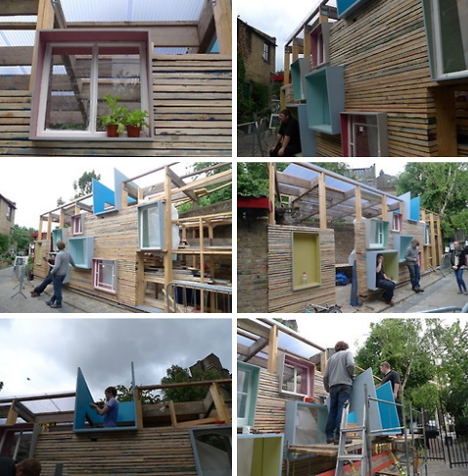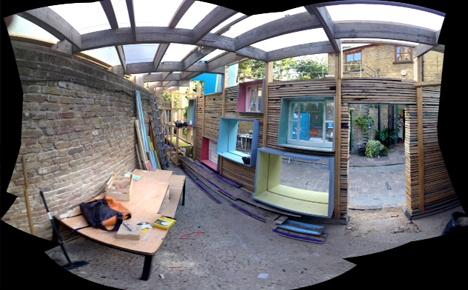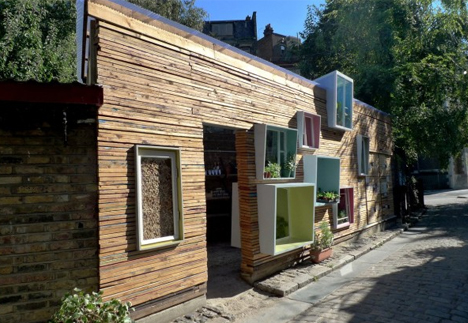This competition-winning design uses upcycled materials to frame a street-facing experience, in part through a fresh take on ‘window shopping’. Its aim: to create a unique and sustainable experience for Londoners looking to purchase fruit- or vegetable-producing plants.
Sponsored by Hackney City Farm, the competition encouraged applicants to reuse materials and strive for sustainability, but this group set themselves apart by proposing something both contextual and eye-catching with a strong pedestrian-side presence.
The team behind this colorfully-painted Sill-to-Sill solution drew inspiration, as well as many of their actual materials, “from the architecture of the local neighbourhood, defined by streets of Victorian terrace houses with their imposing brick facades and generous sash windows. In recent years these homes have been bought up in a wave of gentrification and as new owners move, builders get to work, improvements are made and old materials are discarded.”
Alongside recycled slats used for the walls, these found window elements were turned into benches, counters, shelves, notice boards and sources of natural light, most prominently used as a colorful display that draws people in from the sidewalk to see their wares. “‘Sill to Sill’ aims to encourage local people to take up urban agriculture by presenting plants in an immediately familiar setting: ‘buy from our window sill and grow on your window sill’.”
Part of the approach also involved using strategies that would allow for easier construction despite apparent architectural complexity: “Though visually sophisticated, the design utilized basic timber construction techniques and simple materials in a manner that could easily be assembled by a team of unskilled volunteers. Community involvement at every stage of the project, from inception through construction and on to use, was at the core of the team’s proposal.”
